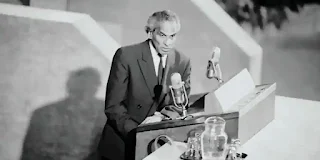The Argumentative Indian
(Writings on Indian History, Culture and Identity)
Author: Amartya Sen (2005)
 |
https://www.amazon.in/
Argumentative-Indian-
Writings-History-Identity
/dp/0141012110 |
The teachings of my history teacher, LKK, in Form 3 still ring as clear as a bell to this day. Comparing India's fight for independence to the Opium War in China, he pointed out that the primary difference between China and India was the written language. No doubt, each part of China had their unique dialects, and a person from one end of the country may not be able to communicate with another person at the other end; they could thank Emperor Shih Huang Ti for giving a unified script.
India's predicament was that it was not only divided by language but also by writing. Each region had its own spoken language and its own scripts as well. The British found it very convenient to employ their 'divide-and-rule' tactic. What LKK failed to mention was that Indians were argumentative, even among themselves.
They have been arguing about everything for a long time. With scant understanding of the events happening around them, they try to make sense of what they see. Unlike a multiple-choice question, its answers are not fixed; the interpretation of weather, space, and beyond is anyone's guess. For ages, Indians have been dedicated to defending their POV, making it a national pastime.
Adi Shankara, a sage in the 8th century CE, is said to have travelled to the four corners of India, thereby marking the boundaries of the subcontinent. He engaged in numerous debates with renowned scholars from various philosophical schools to explore unanswered questions about Nature, space, life, and the virtues of daily living. Shankara, from the South, of the Advaita Vedanta tradition, believed that our consciousness is an extension of the concept of God. In other words, our Atma is part of the Great Consciousness, Paramathma. He used to participate in month-long, intense discourses across Bharat. His famous debate was with Vardana Misra. Misra was from the Mimamsa school, which studies the Veda and attempts to interpret the Vedic texts and our actions (karma).
The famous debate between Shankara and Misra was presided over by Misra's wife, Ubhay Bharati. She was also a renowned scholar. When Madana Misra was finally cornered, she took her husband's place to continue the discussion. It is said that both the husband and wife later joined Adi Shankara's school.
 |
Pattimandram
https://www.flickr.com/photos/50956076@N08/4674835676/ |
This tradition of debating simple topics related to daily life can often be seen on Tamil cable networks. One of the popular shows here is 'Pattimandram', hosted by scholars fluent in Tamil and various local speakers. Some speakers actually earn a living by speaking at different events in various towns throughout the year. Their mastery of the language is impeccable, and their stage presence is electric. The show leaves everyone in stitches and offers mental nourishment.
Another example of the argumentative Indian is aptly illustrated by India's Republic TV and, more recently, by most Indian YouTube news channels. It is common to see multiple small screens, each with people shouting loudly to prove their points. It often results in the anchor having the final say, while other viewpoints are simply lost in the noise.
A debate between a charioteer and a warrior who developed cold feet on the eve of the war, which would pit cousins and uncles against each other, evolved into a lengthy holy scripture on virtue and worldly obligations. It is the Bhagavad Gita. Imagine a single counselling session extending to 700 verses, divided into 18 chapters. Not only that. The Bhagavad Gita is actually part of a larger epic, the Mahabharata, which is seven times longer than the Iliad and the Odyssey put together. It is filled with dialogues, dilemmas, and alternative perspectives. The incessant arguments and counter-arguments spread over volumes of debates and disputes make readers convinced that truth is not a singular concept, but is a spectrum. Arjuna's hesitation about going to war may actually carry some weight, as the post-Kurukshetra era reveals carnage and tragedy that will be remembered by generations to come. The Pandavas and Kauravas were never the same. Even Krishna's descendants became decadent and wayward. There is a case against just 'just doing it' and 'hesitating'.
 |
The humiliation of Draupadi
https://commons.wikimedia.org/wiki/File:Draupadi_
Vastraharan,_Raja_Ravi_Varma.jpg |
When the world discusses India, the favourite bashing is on its perceived injustice based on gender, caste and treatment of its minorities.
When it comes to gender equality, at a time when women in other parts of the world were seen but not heard, Indian women played pivotal roles in their societies. An essential character in the Mahabharata, Draupadi, is not just a pretty figure but a wife to five husbands. The Upanishads tell the story of a sharp, intellectual female interrogator named Gargi. Jhansi Rani and many female warriors fought valiantly against the tyranny of the invaders. In 1925 and 1933, the Indian National Congress Party appointed a female President. For the record, the British had their first woman leader of a major British political party in 1975 with Margaret Thatcher.
India had its own complicated system of labour distribution. It ensured the proper functioning of society. The changes in the world economy and the intrusion of foreign powers, who attempted to simplify the system using their own yardstick, created a cruel caste system. It started a hierarchical system based on one's birth.
India's internal societal reforms had started addressing the issue. Various offshoots of Hinduism, like Buddhism and Jainism, were reactionary movements against Brahminical orthodoxy. The Hindu Bhakti movement and Sufis tried to break social barriers. Many philosophers, poets, and thinkers were from non-Brahmanical groups. Vyasa was a fisherwoman's son. Vyasa was a reformed thief.
Prolixity is not something alien to Indians, it seems. They love to talk. In one interview, Sadhguru, the new-age guru, was complaining. He was saying that all the chaiwallas (tea sellers) knew about everything. I suppose that applies to all professions too, such as barbers, taxi drivers, and milk sellers. Sadhguru went on to say that they are well-versed in politics, governance, scandals, cricket, Bollywood gossip, and inside information about the world's best-kept secrets. The only thing he did not know too well was how to make good tea!
 |
VK KrishnaMenon
https://images.app.goo.gl/joZkADWkx3dtHUJK6 |
Another glaring example is how VK Krishna Menon of India delivered the longest speech ever given before the UN Security Council. In 1957, over the course of two days, he delivered two speeches, totalling approximately eight hours, on India's position regarding Kashmir. Even he could not stand his own talk. He soon collapsed after the speech.
Free speech and the freedom to express oneself are not exclusive to the West. It had been part and parcel of Indian and Eastern tradition. The richness of the tradition of argument makes a significant difference to subcontinental lives today. Persistent arguments form an essential part of the people here. Democracy is closely tied to public discussion and interactive reasoning.


























